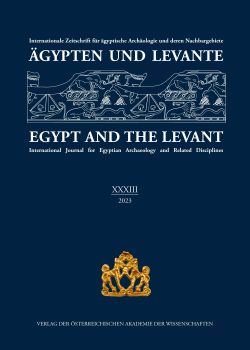
Ägypten und Levante 33, pp. 323-356, 2024/02/28
Internationale Zeitschrift für ägyptische Archäologie und deren Nachbargebiete
International Journal for Egyptian Archaeology and Related Disciplines
The Second Intermediate Period (ca. 1725–1550 BC)2 was a time of change in Egypt. Not only was the country divided into several political units, but one of these, in the north-eastern Nile Delta, was ruled by a dynasty of Levantine origins – the Fifteenth (also referred to as the Hyksos).3 This dynasty had its capital at Avaris (modern Tell el-Dab‘a), but the site had already been occupied during the (later) Middle Kingdom. 4 Differences between the Middle Kingdom and the Second Intermediate Period, especially the increasing size of the site and the growing social stratification of its population, have been noted in earlier archaeological studies.5 The present article shows how these differences can be related to the changing role of Tell el-Dab‘a in the circulation of object types during the Late Middle Kingdom and the Second Intermediate Period. Using network analysis, this study investigates Tell el-Dab‘a’s interactions with other sites in Egypt and Tell el-Dab‘a’s role in the created networks based on material culture.
Keywords: Tell el-Dab‘a, Late Middle Kingdom, Second Intermediate Period, Network analysis, Networks of material culture